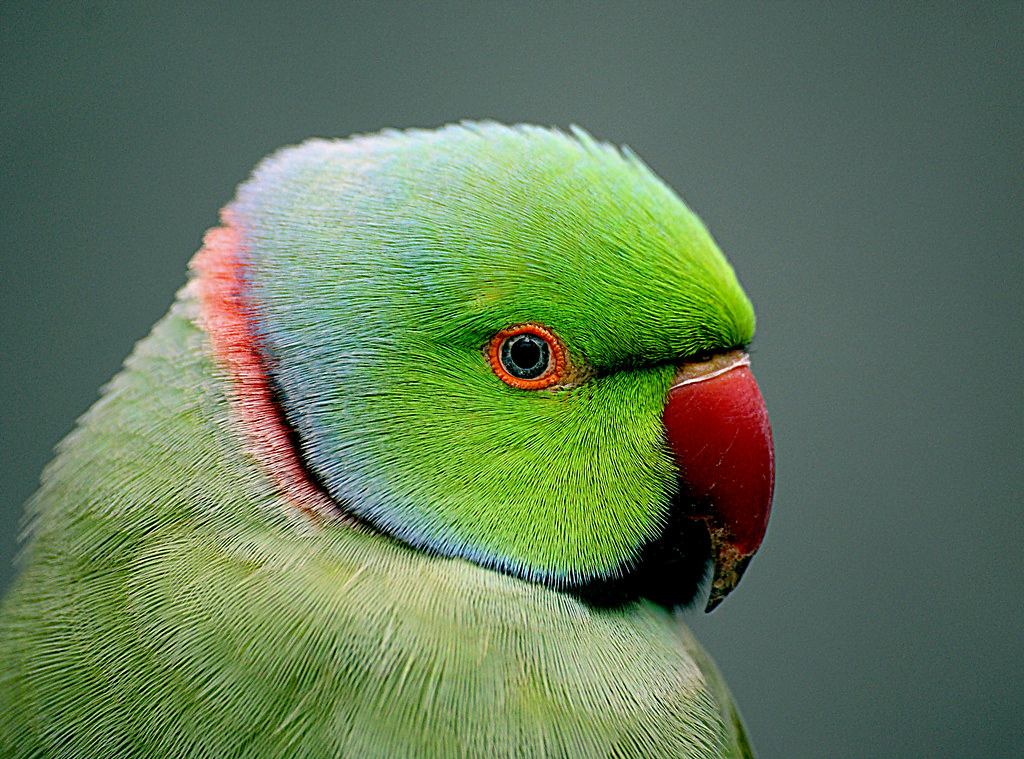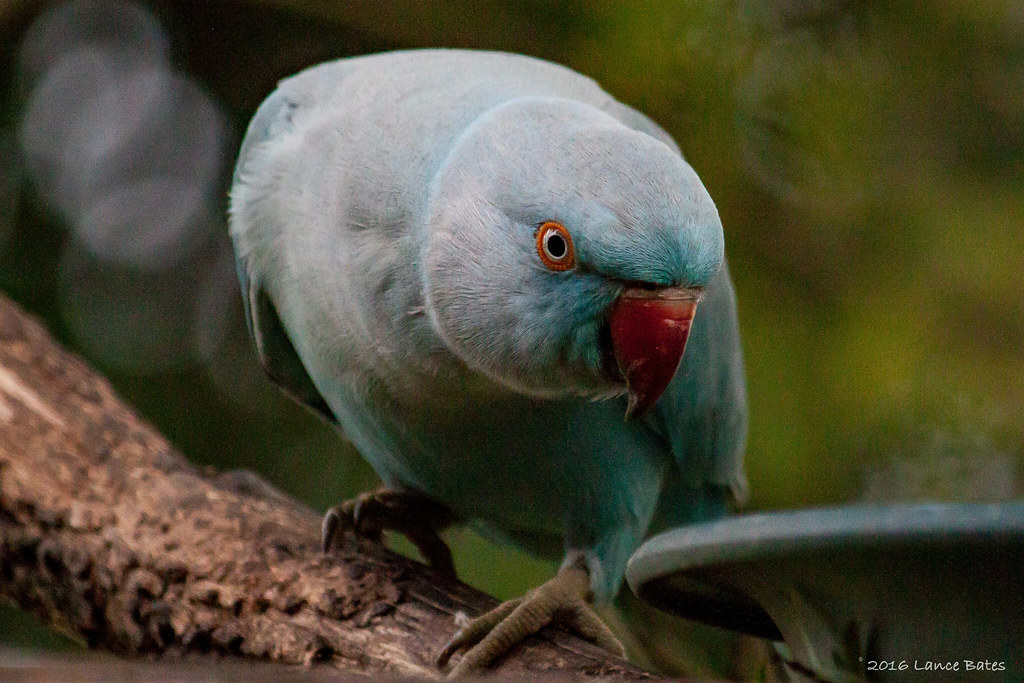The Indian Ringneck Parakeet, a vibrant and intelligent bird, has captivated bird enthusiasts worldwide with its remarkable ability to mimic human speech and express a wide range of emotions. Originating from the forests in India and Sri Lanka, these parakeets have adapted well to various environments, showcasing their resilience and versatility.
Their distinctive physical feature, a colored ring around the neck, becomes prominent as they mature, adding to their visual appeal. Known for their sociable nature, Indian Ringneck Parakeets thrive on interaction and mental stimulation, making them excellent companions for those willing to invest time in their care. Understanding the nuances of their behavior and dietary needs is crucial for fostering a healthy environment for these exquisite birds.
Key Takeaways
Indian Ringneck Parakeets are vibrant and intelligent birds, making them excellent pets for those willing to invest time in training and socialization.
Regular health check-ups and a balanced diet are crucial for maintaining the well-being of an Indian Ringneck Parakeet; they thrive on a variety of fruits, vegetables, and high-quality pellets.
These parakeets require a spacious cage and enjoy having plenty of toys and perches to keep them entertained and engaged.
Social interaction plays a vital role in the life of an Indian Ringneck Parakeet; they need daily interaction with their human companions to prevent boredom and behavioral issues.
Understanding and respecting their complex communication and behavior patterns is key to forming a strong bond with an Indian Ringneck Parakeet.
While they can be noisy, with proper training, Indian Ringneck Parakeets can learn to speak and perform tricks, adding to the joy of living with them.
Breed Overview
History
Indian Ringneck Parakeets have roots that stretch back to ancient India, where they were cherished for their beauty and engaging personalities. These birds were not just pets but also symbols of status and love, often featured in Indian mythology and art. Their journey from the Indian subcontinent to other parts of the world began through trade routes and colonization efforts. This spread was gradual, showcasing their adaptability and appeal across various cultures.
By the 20th century, Indian Ringnecks had established a firm foothold in the pet trade. Their popularity surged as people became enamored with their vibrant colors and charming behaviors. This period marked a significant shift in how these birds were perceived globally, transitioning from exotic novelties to beloved companions in homes around the world.
Physical Characteristics
The physical allure of Indian Ringneck Parakeets is undeniable. They boast a spectrum of color variations, from the classic green that mirrors their natural habitat to striking mutations like blue, yellow, and even albino. What sets the males apart is the characteristic ring around their necks, which becomes visible as they mature; females typically lack this marking.
These parakeets are medium-sized birds, measuring about 16 inches in length when including their tail feathers. This size makes them manageable for most bird enthusiasts but still large enough to command presence whether perched or in flight.
Personality and Temperament
Indian Ringneck Parakeets are celebrated for their exceptional intelligence and ability to mimic human speech with clarity. They can learn a vast vocabulary and often surprise their owners with spontaneous phrases. However, this intelligence comes with a need for regular social interaction. Without it, they may develop behavioral issues or become withdrawn.
They possess a playful nature that endears them to many but also require clear boundaries from their caregivers. Their social needs mean they thrive on interaction both with humans and other birds. Neglecting these aspects can lead to challenges in managing their behavior, making it essential for potential owners to understand the commitment required in caring for these vibrant creatures.
Health And Care
Common Health Issues
Indian Ringneck Parakeets can suffer from various health issues, including psittacosis, avian polyomavirus, and nutritional deficiencies. Regular veterinary check-ups are crucial to catch these ailments early. Owners should watch for signs of illness. These include changes in behavior or appearance. Lethargy or a ruffled plumage can signal something is wrong.
Dietary Needs
A balanced diet is essential for these parakeets. It should consist of seeds, fruits, vegetables, and pellets. Foods toxic to birds, like avocado and chocolate, must be avoided. To prevent boredom and ensure nutritional balance, offering a variety of foods is wise.
Exercise Requirements
Daily out-of-cage time is vital for their physical and mental well-being. Toys and puzzles can keep them engaged and active. A safe play area helps prevent accidents.
Grooming
Regular nail trims and occasional wing clipping are necessary for safety reasons. Bathing or misting benefits feather health. Clean living conditions are important to prevent disease.
Living with a Indian Ringneck Parakeet
Training and Socialization
Training an Indian Ringneck Parakeet is relatively easy due to their high intelligence. They respond well to patience and positive reinforcement. It’s crucial to start training early. This helps prevent aggression and fear towards strangers. Owners should use treats and gentle words for encouragement.
Regular, gentle handling is key to building trust. This bond makes socialization smoother. Without it, these birds may become shy or aggressive.
Environment
A spacious cage is vital for an Indian Ringneck Parakeet. They need room to fly and exercise. The cage should be placed in a quiet, stress-free area away from drafts and direct sunlight. This ensures they feel safe and comfortable.
Enriching the environment is also important. Owners should provide various toys, perches, and opportunities for foraging. These stimulate the bird’s mind and prevent boredom.
Activities They Enjoy
Indian Ringneck Parakeets enjoy a variety of activities that keep them engaged:
Puzzle toys challenge their intelligence.
Interactive play with owners strengthens their bond.
Learning new tricks keeps their minds active.
These birds cherish social interaction, whether with humans or other birds. Their joy in vocalizing and mimicking sounds is evident daily. Such activities not only entertain them but also foster a deeper connection with their human companions.
Misc.
Popular Names
Indian Ringneck Parakeets often get names that are as colorful as their feathers. Common choices include Sunny, Kiwi, and Sky. These names reflect their bright and cheerful nature.
However, many owners prefer traditional Indian names like Raja (meaning king) and Sona (meaning gold). These names pay homage to the bird’s heritage and exotic beauty. When naming these parakeets, considering their personality or distinctive physical traits can lead to fitting and unique names.
Fun Facts
Indian Ringneck Parakeets have a long lifespan, thriving up to 30 years in captivity with proper care. This longevity is a testament to their resilience and adaptability.
They possess an impressive ability to mimic a wide range of sounds, from human speech to everyday household noises. This vocal prowess makes them fascinating companions. Their cognitive abilities and complex social structures have also made them valuable subjects in behavioral research studies.
Common Myths
Contrary to popular belief, Indian Ringnecks aren’t always loud or noisy. With proper training and socialization, they can learn when it’s appropriate to be vocal. This debunking shows that noise level largely depends on the environment and care provided.
Not all Indian Ringnecks exhibit aggressive behavior; much like humans, their temperament varies greatly by individual and upbringing. It’s crucial to understand that these birds’ demeanor can be shaped by positive interactions.
Furthermore, the idea that they are low maintenance pets couldn’t be further from the truth. They require significant care and attention, including a balanced diet, regular exercise, and mental stimulation through toys and interaction.
Most Similar Breed
The Alexandrine Parakeet stands out as the most similar breed to the Indian Ringneck Parakeet. Both share remarkable intelligence, comparable size, and long lifespans which make them equally appealing to bird enthusiasts.
However, differences do exist; for instance, Alexandrines are generally larger with distinct color patterns setting them apart visually from Indian Ringnecks. Despite these physical distinctions, both breeds demand similar care needs—comprehensive diets, ample exercise opportunities, and consistent social engagement—to thrive.
Summary
The Indian Ringneck Parakeet emerges as a vibrant and intelligent companion, requiring dedicated care and social interaction. Its distinct personality traits and health needs underscore the importance of informed and attentive guardianship. They thrive in environments that cater to their physical and emotional well-being, highlighting the necessity for prospective owners to commit to their long-term care. The discussion on their breed specifics, health care, living conditions, and miscellaneous concerns provides a comprehensive overview for anyone considering adding these birds to their family.
Engaging with an Indian Ringneck Parakeet demands time, patience, and understanding, but rewards caregivers with unique bonding experiences. It’s imperative that potential owners research thoroughly and prepare to meet the specific needs of these birds. For those ready to embrace the challenges and joys of caring for an Indian Ringneck Parakeet, the journey promises to be enriching. Let this guide serve as a stepping stone towards responsible and fulfilling parakeet guardianship.
Frequently Asked Questions
How long do Indian Ringneck Parakeets live?
Indian Ringneck Parakeets can live for 20 to 30 years with proper care, including a nutritious diet, regular exercise, and mental stimulation.
What are the dietary needs of an Indian Ringneck Parakeet?
Their diet should consist of high-quality pellet food, fresh fruits, and vegetables. Avoid avocado and chocolate as they are toxic to parakeets.
Can Indian Ringneck Parakeets talk?
Yes, Indian Ringneck Parakeets are known for their ability to mimic human speech. They can start speaking as early as eight months old.
What kind of habitat is best for an Indian Ringneck Parakeet?
A spacious cage that allows them room to fly and play is ideal. Include perches of different sizes and textures, along with toys for mental stimulation.
How often should I take my Indian Ringneck Parakeet to the vet?
Annual wellness check-ups are recommended. However, if you notice any signs of illness or abnormal behavior, consult a vet immediately.
Are Indian Ringneck Parakeets good for beginners?
They can be challenging for first-time bird owners due to their need for social interaction and mental stimulation. Experienced or dedicated beginners ready to learn about their complex needs may find them rewarding pets.








0 Comments